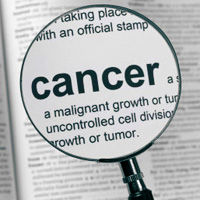Age above 70 years and Charlson Comorbidity Index higher than 3 are associated with reduced survival probabilities after radical cystectomy for bladder cancer. Data from a contemporary series of 334 consecutive patients

Accepted: December 7, 2020
All claims expressed in this article are solely those of the authors and do not necessarily represent those of their affiliated organizations, or those of the publisher, the editors and the reviewers. Any product that may be evaluated in this article or claim that may be made by its manufacturer is not guaranteed or endorsed by the publisher.
Authors
Objective: To assess the joint effect of age and comorbidities on clinical outcomes of radical cystectomy (RC).
Methods: 334 consecutive patients undergoing open RC for bladder cancer (BC) during the years 2005-2015 were analyzed. Pre-, peri- and post-operative parameters, including age at RC (ARC) and Charlson Comorbidity Index (CCI), were evaluated. Overall and cancer-specific survivals (OS, CSS) were assessed by univariate and multivariate modelling. Furthermore, a three-knot restricted cubic spline (RCS) was fitted to survival data to detect dependency between death-rate ratio (HR) and ARC.
Results: Median follow-up time was 3.8 years (IQR = 1.3-7.5) while median OS was 5.9 years (95%CL = 3.8-9.1). Globally, 180 patients died in our cohort (53.8%), 112 of which (62.2%) from BC and 68 patients (37.8%) for unrelated causes. After adjusting for preoperative, pathological and perioperative parameters, patients with CCI > 3 showed significantly higher death rates (HR = 1.61; p = 0.022). The highest death rate was recorded in ARC = 71-76 years (HR = 2.25; p = 0.034). After fitting an RCS to both OS and CSS rates, two overlapping nonlinear trends, with common highest risk values included in ARC = 70-75 years, were observed.
Conclusions: Age over 70 years and CCI > 3 were significant factors limiting the survival of RC and should both be considered when comparing current RC outcomes.
How to Cite
PAGEPress has chosen to apply the Creative Commons Attribution NonCommercial 4.0 International License (CC BY-NC 4.0) to all manuscripts to be published.

 https://doi.org/10.4081/aiua.2021.1.15
https://doi.org/10.4081/aiua.2021.1.15



